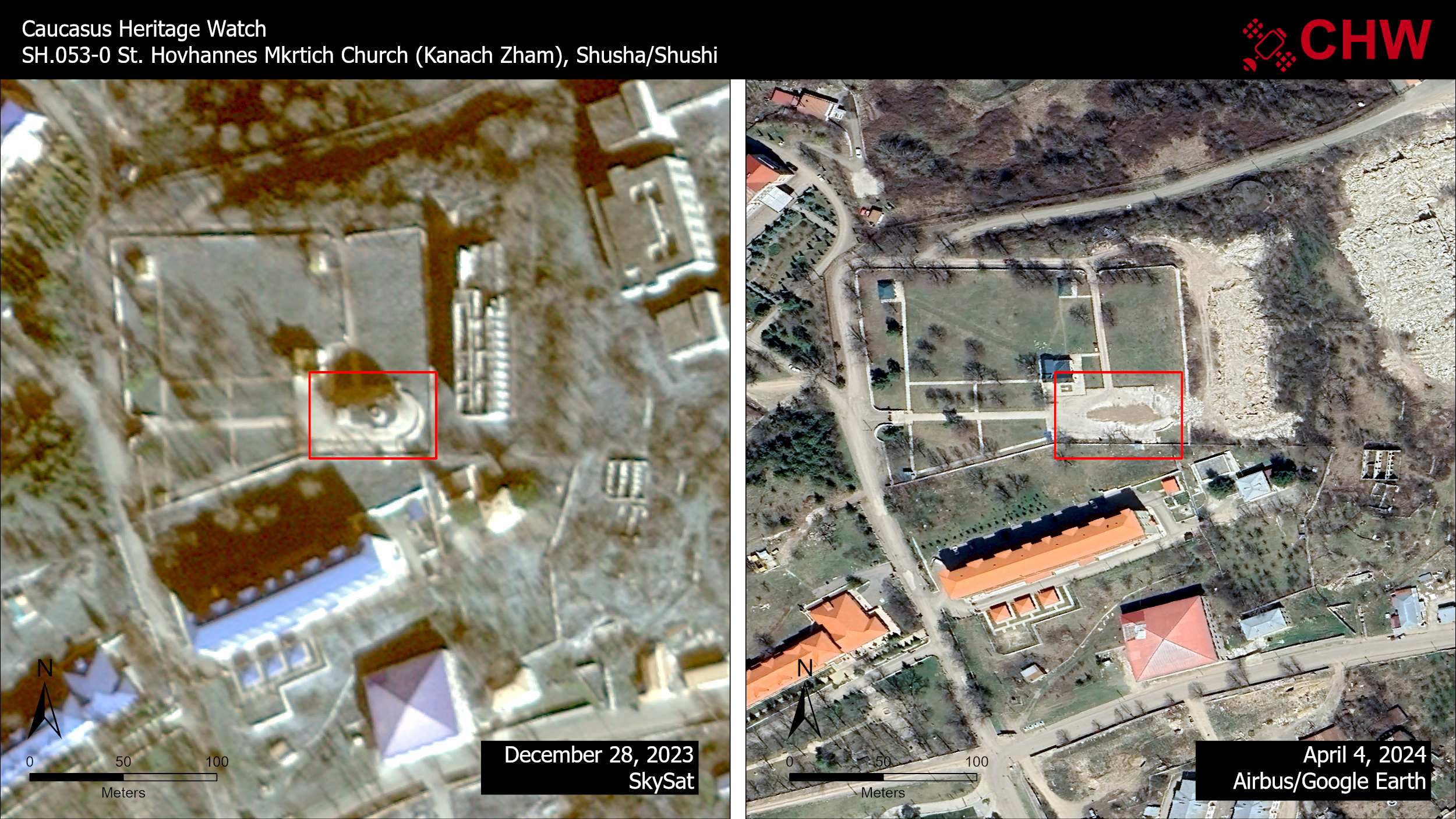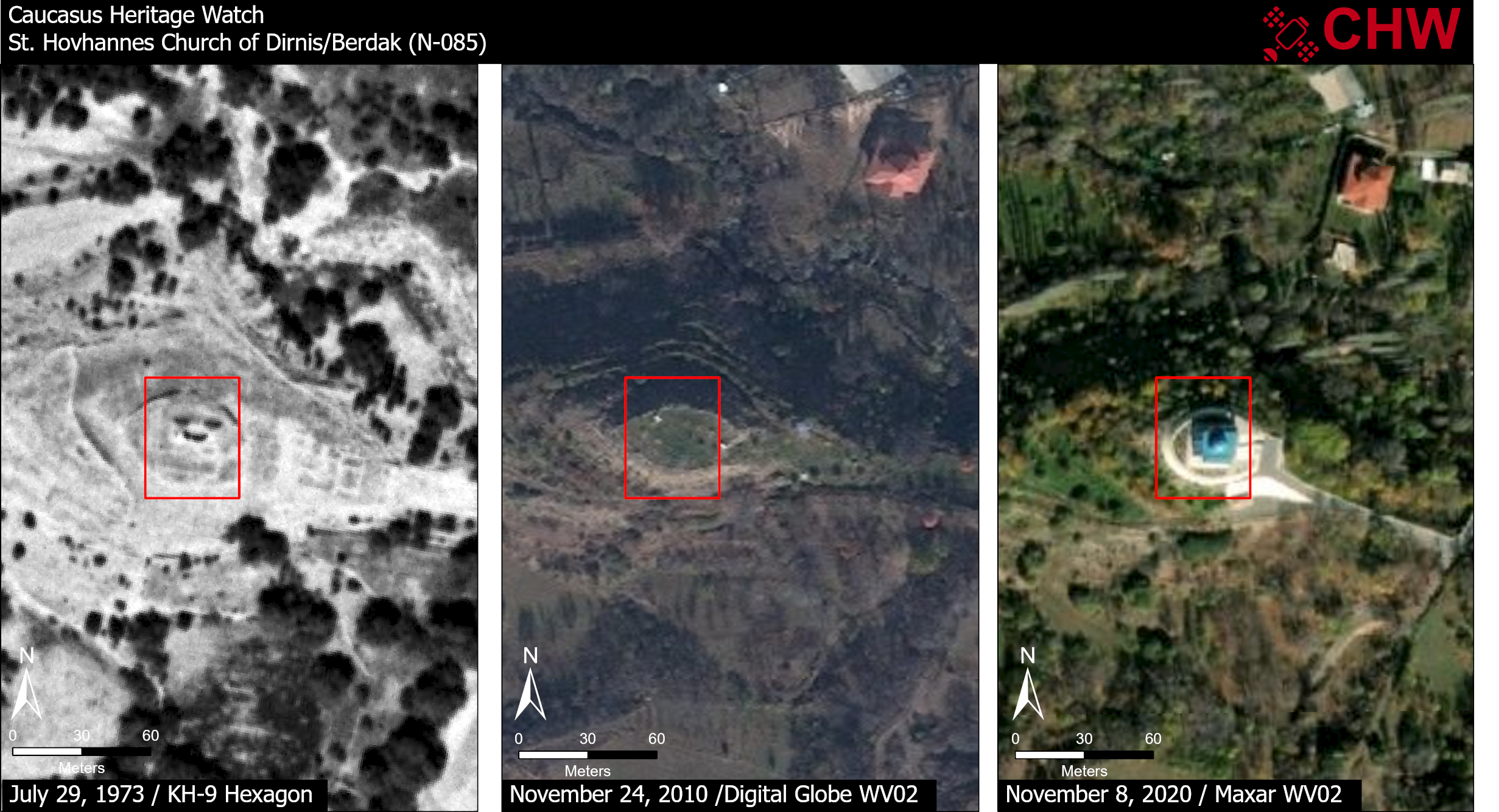CHW’s Focal Areas
Heritage Forensics in the Caucasus Region
CHW conducts two primary forms of heritage forensic research
Heritage monitoring
CHW monitors at-risk heritage caught in the cross-fire of the ongoing Nagorno-Karabakh conflict. We use satellite tasking to regularly update condition assessments of hundreds of heritage sites.
Historical Forensics
CHW conducts forensic analyses of heritage abuses in the region, including the erasure of Armenian heritage in Nakhchivan and abuses of Azerbaijani heritage in Nagorno-Karabakh between 1994 and 2020.


Why We Do This
There are a number of reasons why we founded CHW. None of them are about partisanship in the Nagorno-Karabakh conflict. We value the heritage of all communities. But we deplore and condemn heritage erasure and other deliberate abuses of tangible heritage. We seek to not only prevent destruction where we can but also clearly and soberly place responsibility where it belongs. That said, we recognize that the public deployment of satellite surveillance is a unique strategy and hence need to clearly justify both the time and expense of the effort. CHW assesses the current threat to Armenian heritage monuments to be both present and long-term, necessitating a sustained program of surveillance. Archaeology has only rarely had the capacity to document an episode of heritage erasure in real time. By joining new technologies with the expertise of descendant communities, CHW is attempting to intervene in the kinds of silent erasure that took place first in Turkey, in the aftermath of the Armenian Genocide, and more recently in Nakhichevan/Nakhchivan. The destruction of the khachkars at the cemetery of Djulfa is already well-documented, including by advanced satellite image analysis, and historical research has also established the destruction of numerous Armenian churches, including at least seven just in the village of Agulis alone. Azerbaijan’s leaders have gone on record with hostile remarks that clearly endorse attacks on Armenian heritage sites, including explicit calls for the erasure or falsification of cultural monuments. Delays in providing UNESCO inspectors access to the region suggest an effort to control the scope of such a mission. Given the bellicose rhetoric from Baku and the unwillingness to allow unfettered expert oversight, it can be no surprise that CHW has concluded that state-sponsored heritage destruction, combined with vandalism inspired by a governmental failure to protect heritage sites, represents a clear and immediate threat to the region’s Armenian heritage. It might be naive to suggest that we can forestall heritage erasure once initiated; but by documenting events in something close to real time, we change the traditional form of narrating cultural genocide. Forensic accounts of cultural genocide are typically elegies of loss, where accountability is clouded by distortions of the historical record by those in power. By doing the forensic work in real time, we are sounding an alarm rather than writing an elegy. And where possible, we are assigning culpability directly rather than diffusely. To acknowledge cultural erasure in both Turkey and Nakhchivan/Nakhichevan is not to be partisan. It is to state historical facts corroborated by the preponderance of evidence. Where we are unsure, we will say so. Where the images clearly demonstrate, we will say so. Where we simply don’t know, we will say so. Past damage to cultural heritage does not justify or excuse current or future attacks. CHW does not condone assaults on cultural heritage past or present by either party in this conflict. And we strongly reject the moral logic of “what about-ism” that seeks to justify damage today by pointing to destruction in the past. Our goal is to break that cycle of endless recrimination by recognizing past destruction but also keeping a watchful eye on the present. Only through regular, publicly visible surveillance can we hope to clearly establish accountability and ultimately take the region’s heritage off of the front lines of the conflict.
Why Do We Make Our Findings Public?
Our goal is not to simply document heritage destruction but to deter it; it is therefore important for our observations to be broadly disseminated. We have chosen Twitter (@CaucasusHW) and Facebook as platforms for broadcasting impact notices and threat alerts. These are meant to complement our regular reports by providing more timely assessments. Before we tweet, our threat alerts and damage assessments go through a series of protocols that require careful thought, consultation and evaluation. If a CHW monitor detects damage or an immediate potential threat, the full CHW team is notified. If the other team members verify the situation of concern, our next step is to consider what steps to take. A decision to push the issue to social media is taken only when CHW believes public scrutiny might ameliorate the situation and/or spur public bodies to action, including journalists, multinational organizations, and civil society activists. If concerns emerge that publicity might make a situation worse, we reserve the observation for the next report. If we determine that public attention is merited, we then consult with our partner stakeholders, experts in the archaeology and architecture of the region, to seek their input on both our monitoring observation and publication plan. We then prepare the impact imagery from our archive and compose the written assessment for our report and/or social media.
